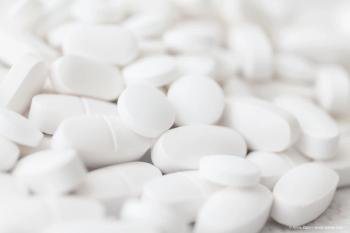
Q&A: Margaret Chang on the phase 1 trial of OTX-TKI for diabetic retinopathy
Margaret A. Chang, MD, MS, presented updates from the HELIOS Phase 1 trial of OTX-TKI, a sustained-release formulation of the tyrosine kinase inhibitor, axitinib, for the treatment of diabetic retinopathy (DR), at the American Academy of Ophthalmology 2025 annual meeting, held October 18-20, in Orlando, Florida, Untied States. The study compared a single injection of OTX-TKI with sham in patients with moderately severe to severe DR who did not have center-involving diabetic macular oedema (DME).
Note: The following conversation has been lightly edited for clarity.
OTE: Can you share an overview of your presentation of the HELIOS trial from AAO 2025?
Margaret A. Chang, MD, MS: HELIOS was the phase 1 trial that studied a single injection of OTX-TKI compared to sham in patients with moderately severe to severe diabetic retinopathy. Keep in mind, these are patients who didn't have center-involving DME. But as we all know, in clinical practice, there are these patients who will have these little pockets of fluid outside that foveal center. This post-hoc analysis found that over time, OTX-TKI treated eyes compared to sham, had improvements in retinal fluid metrics for the entirety of the study. Compared to sham eyes, OTX-TKI eyes had a consistent reduction in overall retinal volume measurements over time. In addition, there was a consistent reduction intraretinal fluid. This really suggests that OTX-TKI has more widespread effects on the overall retinal leakage and permeability. Both macular fluid overall retinal to RPE volume measurements as well as intraretinal fluid, did decrease with OTX-TKI and that was really consistent for the entire study. I think this really shows that we might want to analyze these alternative metrics to have a better understanding of how our therapies are actually affecting the overall retina. Also, I would say that this might lead us to maybe more consistent treatment of these eyes and maybe more aggressive treatment of these eyes, if we can somehow tie the retinal volume measurements to retinal function.
OTE: For anyone unfamiliar, what exactly is the OTX-TKI treatment candidate?
Chang: OTX-TKI is basically the tyrosine kinase inhibitor, axitinib with the Elutyx bioresorbable hydrogel technology. Axitinib is a tyrosine kinase inhibitor, works intracellularly to inhibit multiple targets. There's inhibition of all VEGF receptors, but in addition, it does not have any tie2 inhibition. So remember that tie2 is the receptor for ang-one, which leads to vascular stability, so having no tie2 inhibition is a good thing. Then, compared to other TKIs, axitinib is about 100 times more potent against VEGF receptor 2. The Elutyx polymer matrix has been used in other FDA-approved indications, and basically this allows for controlled and sustained release of the therapeutic molecule in a targeted area. All together, OTX-TKI will be able to be dosed every 6 to 12 months. That's a huge gain for our patients in terms of improving their quality of life with a decrease in treatment burden.
OTE: What does is the plan for continued research of OTX-TKI?
Chang: I think we're all looking for a better way to treat diabetic retinopathy early that is going to help patient outcomes for the long term. Luckily, this program is going forward with 2 planned pivotal trials, the HELIOS-2 and the HELIOS-3 trials. HELIOS-2 is going to be looking at 12-month dosing of OTX-TKI, so just a single dose compared to a single dose of ranibizumab 3 milligrams, whereas the HELIOS-3 is going to look at either 6 or 12 month dosing compared to sham. Again, this is for diabetic retinopathy, and instead of that traditional 2-step improvement in DRSS that we see in many, many studies for diabetic retinopathy, both of these studies are going to use a new ordinal DRSS endpoint. Ocular [Therapeutix] developed this with collaboration with the FDA, and so this will look at both disease improvement as well as prevention of worsening, and that will hopefully allow these trials to give us a little bit more sensitive information as to how these medications are working, and hopefully lead to better and faster trial recruitment.
OTE: How could TKIs impact the future of treating patients?
Chang: TKIs are very, very exciting in that new space that we need for sustained delivery of better agents that can help many of our patients with not just diabetic retinopathy, but DME and neovascular AMD, just to help them with quality of life and hopefully improve patient outcomes in the long term, so that there aren't as many issues with lapses in care you.
Newsletter
Get the essential updates shaping the future of pharma manufacturing and compliance—subscribe today to Pharmaceutical Technology and never miss a breakthrough.













































